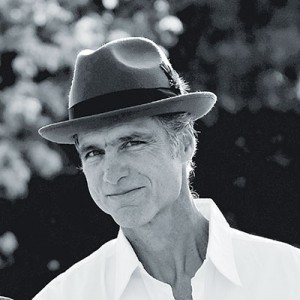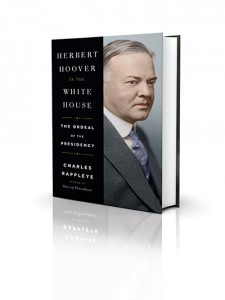
How do you see Herbert Hoover as president?
Hoover was a failure right off the bat. He and the country recognized that even before the Depression, an event of historic proportions whose causes were well under way before he entered the White House. He was temperamentally not suited to the office, which came to haunt him. He’s famously thought of as heartless, and that’s the prejudice of the time. People blamed everything that went wrong on him, and that was certainly unfair. He was unable to communicate with the American people. He rejected the whole idea of selling himself, he reviled public speaking, and he was painfully shy. In fact, he was very much in touch with what was happening. He knew early on how bad it was going to be.
What was his background?
By age 13 he had been orphaned and was sent to live with an uncle in Oregon. At 14 and 15, he was sleeping behind the desk at a land office where he was working full time. He didn’t go to high school, but he studied, like Abe Lincoln reading law books. A recruiter for a new university called Stanford came around and somebody recommended Hoover. His only formal schooling was his four years at Stanford, where he came to the attention of a geology professor and became a geologist. At first, he worked in mines, but he distinguished himself and was commissioned to go to Australia to develop mines. He rose to become a partner in an international conglomerate and built a fortune running and developing mines, and employing large numbers of people in vast operations. By the eve of World War I, he was wealthy.
Wartime relief made him famous.
Hoover had become financially independent. He and his wife, Lou, got involved in assisting Americans trapped in Europe. That segued into relief for Belgium, this little neutral country caught between warring armies and facing famine. Hoover became the driving force behind a relief project. At one point, he had 600 ships operating under a neutral flag of his own—he actually commissioned it—bringing food to Belgium. He came out of the war a humanitarian hero.
How did he get into politics?
After he returned from Europe, new President Warren Harding offered him a place in his Cabinet—anything he wanted. Hoover accepted the position of secretary of commerce, which he kept through the Coolidge administration, and was the principal architect in the government of the financial and economic recovery and the ensuing boom years of the Roaring ’20s—the longest stretch of unbroken, rapid economic growth in American history. He became a household name and the odds-on candidate for president in 1928.
He saw the crash coming.
Hoover was of the new school, which believed government was obliged to intervene. As early as 1925, he was privately pressuring the Federal Reserve Board to tighten monetary policy and to require banks to refuse loans intended for stock speculation. In the White House, also behind the scenes, he pushed Congress to create the Reconstruction Finance Corporation. By lending banks money to keep them solvent, the RFC became a pillar of Franklin Roosevelt’s New Deal. The RFC foreshadowed the Troubled Asset Relief Program, which loaned billions to banks during the most recent financial crisis.
But he stiff-armed drought victims and the unemployed.
Prior to Hoover, when there was a natural disaster—a famine or crop failure—the federal government didn’t deal with it. Starting in 1929, there was not only a terrible agricultural depression but also a drought that actually caused starvation. Hoover’s view was that, yes, it was tough out there, but nothing like the disaster in Belgium. He resisted every congressional initiative to send food to places in distress. He said people should rely on themselves, on their neighbors, and on the states.
He came off as a stern schoolmaster or preacher.
When cries arose for assistance, the lesson of his childhood was that people should get by on their own. Hoover felt this was the only way—the American way—to deal with privation. It came from his very difficult childhood, with both parents dying, and from living out on the Great Plains. The region was still very much a frontier, and people got through times of no money by stretching their resources to the limit and relying on neighbors.
Why did Hoover run for re-election?
Vindication, mostly. He felt very strongly that his approach was correct and that he shouldn’t be blamed for everything that had gone wrong. He believed that Franklin Roosevelt’s approach—the New Deal and an elevated federal role—was the wrong course. So, as much as he hated it, Hoover did run again, and that’s the real contradiction. He reviled the office and talked about how nobody in his right mind would want the job. Yet even after losing in 1932, over the next 12 years he floated himself as a candidate for the White House two or three times. He wouldn’t let go.
He feared what Roosevelt would do, and he tried to make changes before FDR took power.
His lame-duck period was very difficult. Along with unemployment and famine, a banking crisis was brewing. In Hoover’s mind, it was because everybody knew Roosevelt was going to leave the gold standard. Everybody was racing to get money out of banks and into gold to preserve wealth from the coming deflation. Hoover tried to get Roosevelt to cooperate with him by declaring fealty to hard currency, but every time he invited Roosevelt to join him in policy pronouncements, Roosevelt would say airily, “Well, you should do what you think is best.” Hoover sat on his hands as banks went bankrupt everywhere. The banking system collapsed days before the March 4 inauguration. When Roo-sevelt was sworn in to office, he announced a six-day “holiday” during which the banks would close to get their books in order and settle their ledgers. Roosevelt had that unique politician’s touch and it made a huge difference. Once the banks closed and the runs stopped, the panic dissipated. People took their money back to the banks, the banks reopened, and the recovery set in almost immediately.
What did Hoover do right?
Hoover’s greatest insight was that this terrible depression was not the end of capitalism but a breakdown in the system, a crisis of credit brought on by an inflationary bubble. We’ve learned to respond to such conditions by lowering interest rates and bailing out banks. In the most recent crisis, the TARP people took heat, just as Hoover did over the RFC. People
in Congress were telling him it was unconscionable to spend money shoring up banks when people were going without food. Hoover stuck to his guns; he understood that if you can just keep the banks afloat, if you can keep the credit markets functioning, we can work our way out. It was the continuing functioning of the capital markets and the recovery of business—and the gradual resumption of economic growth—that helped to end the Depression. All of that is a credit to Hoover’s vision. ✯
Charles Rappleye, an investigative journalist, has written extensively about the media, law enforcement, and organized crime. His latest book is Herbert Hoover in the White House: The Ordeal of the Presidency, Simon and Schuster, $32.50.
This interview was originally published in the September/October 2016 issue of American History magazine. Subscribe here.






